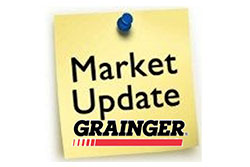10 Issues that May Be Keeping You Up at Night
This posting is adapted from a recent article in Channel Marketing Group‘s newsletter. The thoughts in italics are added commentary.
“As we close out the year we thought we’d share observations from conversations we’ve had with manufacturers and distributors recently. These 10 issues are what is keeping them up at night. While we don’t want you to think about them during your holidays, we think they are worthy of discussion in 2015.
 Rather than count sheep, think about these issues…
Rather than count sheep, think about these issues…
- eCommerce. What should you do? What do my customers want? How much should you invest? How to gain adoption? What content to put on my site? Why will someone go to my site rather than someone else’s? As a manufacturer, what can I offer to distributors to enhance their website? What should I do for mine? What should be on my portal? (and there are more, the question becomes … “What is my plan?”)
Bottom line, it’s great to say you want to have a commerce-enabled site, but before jumping to the technology stage, what is your strategy? Do some research, develop a business plan with some projections & an ROI analysis (multi-year), research solutions, resource appropriately and give it some time … then market it differently than the rest of your business.
- Differentiation. What truly makes me difference than my competition? And is it what I think or what my customers think? Does my team live it daily? How should I communicate this to more than just my top customers? To prospective customers?
It comes down to understanding your value proposition, staking out marketplace positioning, selling your USP internally and externally. Start with gaining insights from your customers, your salespeople, reps and manufacturers. Conduct secondary research and gain competitive insights … but make sure not to drink your own juice!
- Acquisitions / Consolidation. Can expanding territory add value to my business (it can add volume)? How do I communicate my value in this new market? How could diversification increase the value of my business while also increasing share of customer wallet?
The determinant is “what is your vision, and time frame” for your business?”
- Customer Loyalty (Ownership). With the changes going on in the manufacturing community (expanded product offerings, consolidation, rep changes, et al). Manufacturers are also doing more to influence end-customers. As a distributor, how do you gain greater customer loyalty, or, in the words of one distributor, “ownership” of the customer? How “close” should I bring a rep to “my” customer? What do my salespeople really know about my customers (not theirs)? And what about my unassigned accounts?
Changes in industry dynamics will drive a “battle” for share of mind (and wallet) of the customer. In the words of one industry executive, “customers are now free agents.” Distributors and manufacturers need to optimize systems and change philosophies to ensure that they are reaching this audience with more than salespeople and media. The audience is discriminating and is seeking “value”, if you know who they are.
- Beyond my top 5% of accounts. For many distributors, the top 5% of accounts represent 65-70% of sales. How do I reach beyond these customers to determine whom is doing more with my competition? How do I increase sales to them at reasonable margins? Or do I just want to focus on my biggest and hope to “ride their tide?”
Conduct a customer analysis. Review RFM (recency, frequency and monetary value) and understand you need a 2-3 tier marketing strategy. This applies to distributors and manufacturers. Profitable growth comes through taking share beyond your biggest customers (they others may be doing more with your competition) as well as new accounts.
- Branding. What am I known for, or “as”? What do I want to be known for / as? What do others whom I do business with (up channel and down channel) think of me? How do I portray myself to them? Remember, others’ perception of you = their reality.
Some think of branding as “logo and tagline” but the essence of the brand is more important. Understanding what others think of you needs to be combined with what you want to be to create your image. And do you want brand awareness or brand preference. We’ve conducted brand preference studies for manufacturers. Branding for distributors relates more to differentiation and value proposition (services-driven) whereas for manufacturers it is more product category(ies) oriented.
- Marketing Technology.Technology has come to marketing. Everything from design to CRM to websites to e-marketing in its various forms to marketing automation systems and more. Is my staff prepared? Does my IT department understand? Can I afford any, some or all of it? Does this mean that there now needs to be a defined marketing budget vs everything being funded through manufacturer co-op funds? As a manufacturer, how can I use the same tools to better market to my distributors? to end-users and influencers?
Lot’s of questions here as many distributors are questioning what is beyond promotions, events / seminars and brand messaging. Marketing is about demand generation. It’s not “marketing communications”. Is your marketing a sales and profit driver?
- New Product Support. The pace of new product launches, or product enhancements, has accelerated. How do I get the message to my salespeople quicker and more effectively? to customers? As a manufacturer, can I afford the delay between introducing something to my sales force and them getting it through the channel and then to end-users / contractors? How can I accelerate this process?
New products are a margin driver for manufacturers, a differentiator and a reason for a sales call. For distributors they represent opportunities. The key for both parties is how to get the information to the broadest audience (to the distribution channel as well as to end-users) as quickly as possible … and your sales organization may not be the fastest option!
- Margins. Few companies have sustainably increased margins. There are price optimization companies that espouse increasing margins by 2-4%, however, how do I get my salespeople, my company, to understand that operating costs increase (healthcare, taxes, maintenance, etc) and that we need to always seek to optimize margins which means working smarter, better, more efficiently and that we need to promote our value? How do I stop the steady erosion? (and, am I willing to make the necessary changes and communicate the appropriate message?)
Margin management, at the gross and net level, is critical to ensuring longevity. Price management, inventory management, process optimization, and utilizing appropriate metrics to drive performance (and compensation) are critical. If you are not an advocate of continuous process improvement and your management team isn’t questioning the existing state of being, then you are behind the curve.
- Customer Satisfaction. At the end of the day, it’s all about the customer. Are they satisfied? Are we meeting their needs? Do they value doing business with us? What can we do to do better? I know my customers have choices, how can I be their first choice? Once I understand how we perform I can then focus on improving what is important to them. From there I can then consider how to increase the recency of their orders, the frequency of their orders and the monetary value of their orders to increase my sales and profitability. As a manufacturer, am I meeting the needs of distributor principals? Of their purchasing department? Of their salespeople? Where do I compare vs my competition (or am I happy with just switching share year in / year out or swapping distributors in a marketplace)?
The most profitable companies in any industry have the strongest customer advocates, high loyalty ratings and satisfied employees. They are also typically market leaders, have high brand visibility and a strong value proposition … and they attract the best people. What could you be doing better … and are you promoting it?
Lots of issues and questions. All have answers but require asking hard questions and reconsidering legacy approaches. The process starts with exploring where you are, understanding where you want to be and then envisioning the path to get there.”
I hope these questions don’t keep you up at night over the holidays. We’re available if you’d like to discuss.






















